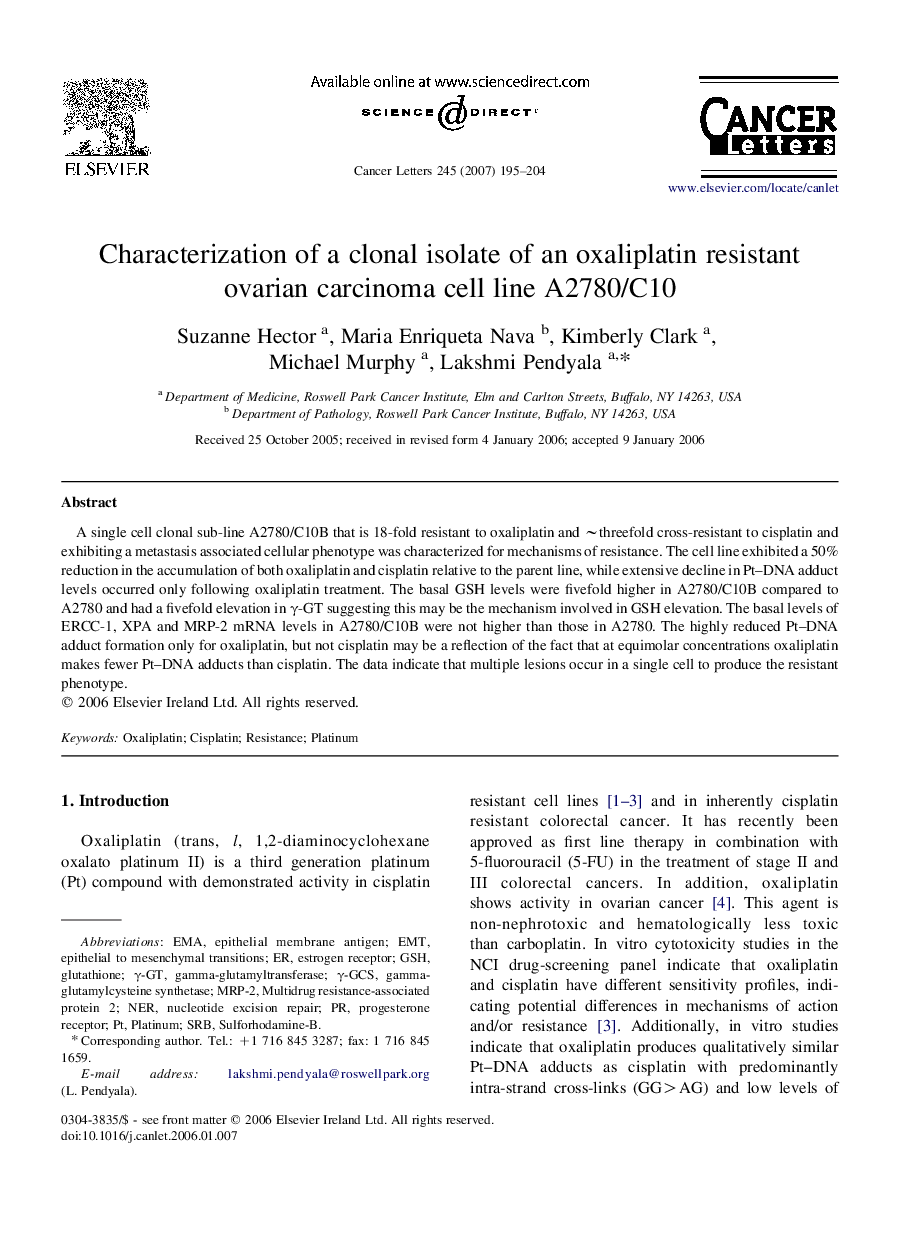| Article ID | Journal | Published Year | Pages | File Type |
|---|---|---|---|---|
| 2115445 | Cancer Letters | 2007 | 10 Pages |
A single cell clonal sub-line A2780/C10B that is 18-fold resistant to oxaliplatin and ∼threefold cross-resistant to cisplatin and exhibiting a metastasis associated cellular phenotype was characterized for mechanisms of resistance. The cell line exhibited a 50% reduction in the accumulation of both oxaliplatin and cisplatin relative to the parent line, while extensive decline in Pt–DNA adduct levels occurred only following oxaliplatin treatment. The basal GSH levels were fivefold higher in A2780/C10B compared to A2780 and had a fivefold elevation in γ-GT suggesting this may be the mechanism involved in GSH elevation. The basal levels of ERCC-1, XPA and MRP-2 mRNA levels in A2780/C10B were not higher than those in A2780. The highly reduced Pt–DNA adduct formation only for oxaliplatin, but not cisplatin may be a reflection of the fact that at equimolar concentrations oxaliplatin makes fewer Pt–DNA adducts than cisplatin. The data indicate that multiple lesions occur in a single cell to produce the resistant phenotype.
